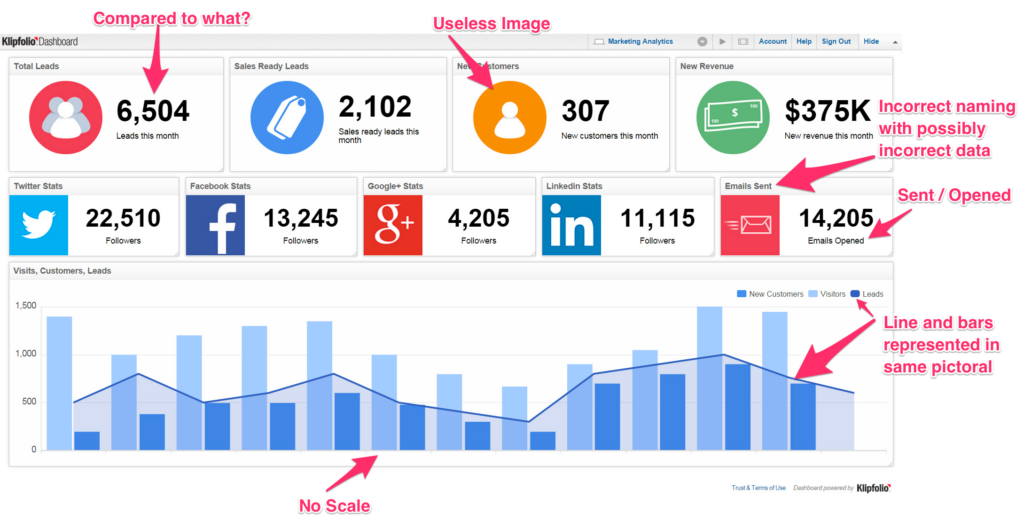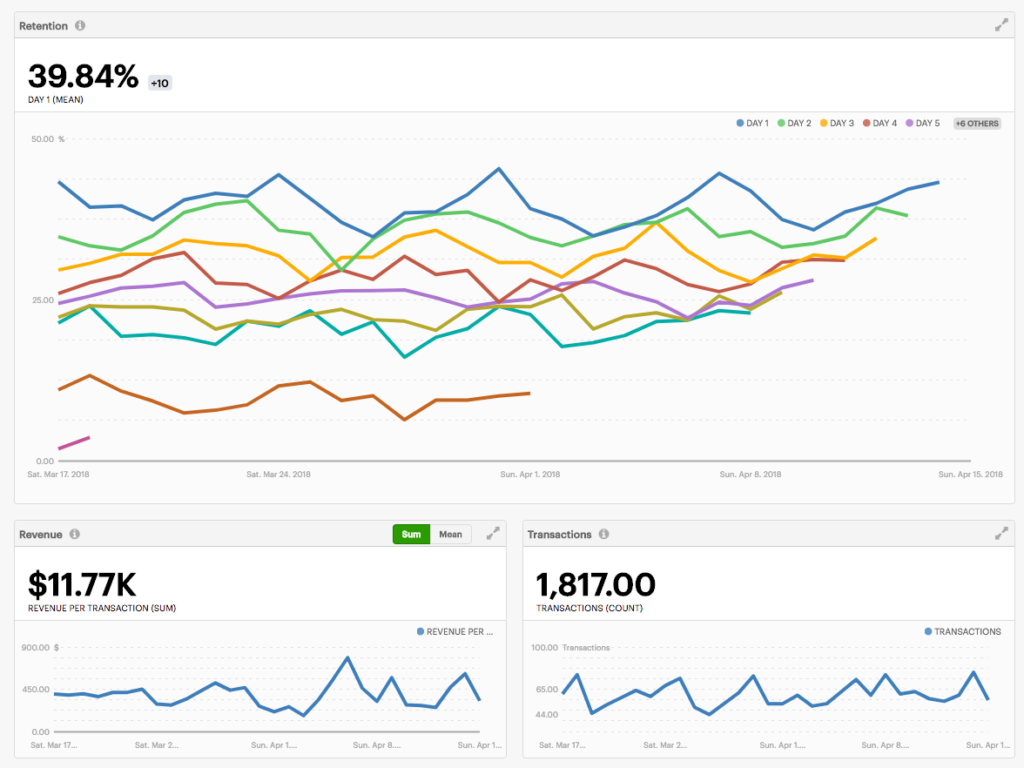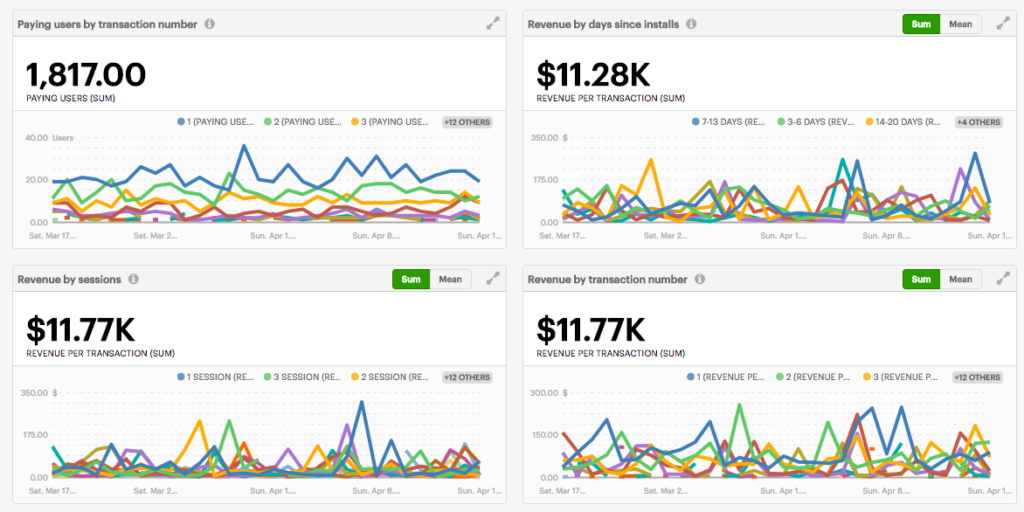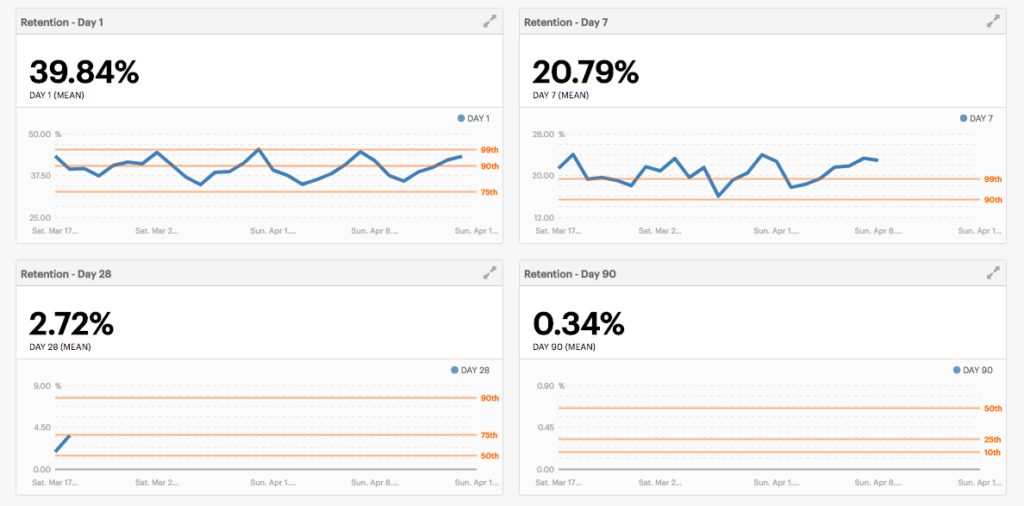· 9 min read
Minimum Viable Analytics: Keeping Your Reporting Lean And Mean
Jacqueline Zenn
Content Crafter at GameAnalytics
Being lean is more just than a tech industry buzzword, it’s a way of life – or at least a smart way of doing business. That applies to many different categories, but especially analytics, and definitely so when you need to figure out your minimum viable analytics.
With most analytics programs (including ours) you get a ton of information, but as it’s commonly said – if you can’t measure it then you can’t improve upon it. We’ll build on that further by saying that if you and your team can’t easily track, consume, and find actionable data in your analytics reports, then what’s the point of tracking everything? You’ll likely end up wasting a lot of time and effort on something unnecessary when you have better things to do – like improving your game or working on new ones.
That’s where the concept of “minimum viable analytics” or “lean analytics” comes in. You can think of this as the analytics version of the “minimum viable product” idea that’s so popular in the startup world, creating a tracking setup that provides just enough information or features to satisfy the team using it, and enough to provide feedback for future game development, but with no extraneous capabilities.
Essentially, it’s just enough to get the job done. But done right, this concept can be quite helpful, and even downright elegant. It can even help you avoid many issues that come up all too frequently in the development world.
Avoiding The Common Analytics Traps
There are definitely a few typical mistakes that are made in the realm of analytics, especially by newbie developers who get excited about all the juicy data they can uncover. For instance, the most obvious and probably the most detrimental mistake is tracking the wrong key metrics, and therefore focusing on the wrong things that are problematic in your game.
Many devs fall into the trap of only looking at the high-level stats, instead of going into more detail when it might be useful. If everything looks fine on the surface, you might miss some underlying problems.

- It’s all well and good having every bell and whistle attached, but not if you can’t understand everything at a glance.
On the contrary, another common trap is analysing things in too much detail by tracking everything just because you can. While some massive gaming companies have the time, inclination, and the resources to do just that, most smaller companies or independent game devs just don’t. Yet, we all want to know how well our games are doing, how everything is tracking, and where we could stand to make some improvements.
Which leads us into the dreaded analysis paralysis. Yes, it’s a buzzword and perhaps kind of annoyingly overused, but it comes from a very real place. If you spend a ton of time sifting through and analyzing your data but don’t often yield any actionable results, then you’re a victim. The cure?
Minimum viable analytics might be a start, but there’s also the need to make sure that your analytics are up to date not only in terms of technology, but in the KPIs that you’re tracking. These should be aligned with tweaks and changes to your game, as well as trends in gameplay. You’ll need to make sure your analytics software or tech are updated on a regular basis – don’t let yourself fall into a trap by getting behind in the updates!
How Focusing On The Minimum Viable Analytics Can Help
Minimalism can be its own reward in a lot of ways, which is why focusing on lean or minimum viable analytics can be incredibly valuable; both in the sense that it saves you time that you can use for other things, and in the sense that it forces you to only look at the metrics that lead to action.
If that all sounds great, remember there are some things you should watch out for when executing on this concept by choosing technology, building dashboards, setting up reporting, and more. What should you watch out for? The most important thing is not to be too minimalist with your data. One of the most common issues is that there is just not enough data there to be actionable or satisfying. Keep in mind that you shouldn’t strip things down too much, or at least you shouldn’t be afraid to add items that you feel like you’re missing back in. Start with the minimum viable metrics and build up from there.
Getting Started And Recognizing That Data Is A Tool
So, how do you pare down your analytics, tracking, and reporting to only the things that actually matter? Start by remembering that data alone won’t make your game great or fix any issues on its own – data is a tool to help you get there, but the rest of the work is up to you and your team.
Also keep in mind that data can’t solve all your problems, as lovely as that would be, and all the data in the world can’t make a game that’s fundamentally flawed into a winner. However, by starting with a few core dashboards and analyzing the data you gather throughout the process, you certainly have a better chance!
The Key Dashboards Your Team Needs
There are generally four main types or groups of people who need to review your analytics – the C-Suite or head honchos, the marketers, the product team, and the dev ops team. Granted, if you’re at a small studio or you’re a solo entrepreneur, you might be the audience for some or all of the above.
In the spirit of lean analytics, you can often get by with a few important metrics or KPIs for each one. For instance, in the case of the C-suite or executive dashboard, all you really need to include is a snapshot of the main KPIs and a few views of the long-term trends.
1. The C-Suite Analytics Dashboard
Think about the type of stats that CEOs would regularly need to show investors, partners, or advertisers, and design the dashboard accordingly. This will probably be your “leanest’ dashboard, and one of its most important facilities is helping to minimize ad-hoc requests that take too much of everyone’s time and mental bandwidth.

- Make sure the top level analytics include what you consider to be the most pertinent details
2. Analytics Dashboards For The Marketers
The marketing crew needs ROI for the ad spend, and to be able to track the campaigns currently running. Engagement, conversions, and revenue data are helpful too. However, perhaps the most important metrics that the marketing team needs are app installs (and their sources) and corresponding uninstalls. They’ll basically need to see the cost, the results, and the return on their efforts at a glance.

- How do you know if your marketing is working if you don’t have the stats to back it up?
3. The Product Team Dashboard: Investigative Analytics
The product team needs a little more information than the previous groups, however, since they need to be able to investigate issues and nip them in the bud before they become major. Ideal metrics for this are number of active users (commonly DAU and MAU), session lengths, user segments, user retention (that can be sliced out into player cohorts), events like purchases or other desired behaviors, any conversion funnels that are set up, and the stats they need to track if A/B testing is happening.
These are all essential for determining any behavior or demographic characteristics of a game’s users, as well as any commons paths through the game, and even underused or ignored features. In short, the product people need to be set up to do ad-hoc investigative work via their dashboards if necessary.

- How long people keep playing your game is definitely something teams need to know, but how much do they need to know before it’s just so much data?
4. Analytics Dashboards For Dev Ops
Finally, the dev ops need the operational metrics the most, like latency, crash reports, and API response tracking in order to monitor the game’s performance and stability. This might be the most important dashboard of all; if your game isn’t working properly, there’s really nothing more vital than making sure it’s fixed.
Metrics such as tracking server performance and getting immediate alerts for crashes or any other problems that might prevent users from playing or fully experiencing your game are key, plus they’ll want to be able to monitor outages and crashes over time to note any patterns (and put a stop to the negative ones).
This might be your most technically-involved dashboard and chances are that no one else on the team will access it, but the ones who need it will definitely thank you.

- Knowing where and when your game is crashing is all-important information for one team, but not necessarily for others.
Wrapping up…
Overall, analytics are important for every member of the team; without the understanding and insights you get from even the leanest analytics program, you’ll have a hard time taking useful or effective actions at all.
Yet, it’s sub-optimal for analytics to eat your team’s – or your own – life, hence the value of keeping it lean and mean. At the end of the day you know that if you can’t measure it then you can’t improve it. Keep in mind that data provides the “what”, but you or your team provide the “why”. That said, neither of those things have to be particularly complicated – especially the “what” – with lean or minimum viable analytics.